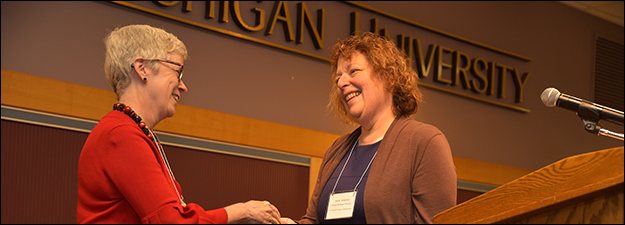Context of the Codex
Sponsoring Organization(s)
Hagiography Society
Organizer Name
Sara Ritchey
Organizer Affiliation
Univ. of Louisiana-Lafayette
Presider Name
Sara Ritchey
Paper Title 1
(Re-)framing Bede's Historia ecclesiastica as Hagiography in Twelfth-Century Germany: The Codex and Context of Manchester, John Rylands Library, MS Latin 182
Presenter 1 Name
Benjamin Pohl
Presenter 1 Affiliation
Univ. of Bristol
Paper Title 2
Reading between the Binds: Scottish Legendary Manuscript
Presenter 2 Name
Melissa Coll-Smith
Presenter 2 Affiliation
Aquinas College
Paper Title 3
The Old Norse-Icelandic Maríu saga in Its Manuscript Contexts
Presenter 3 Name
Daniel C. Najork
Presenter 3 Affiliation
Arizona State Univ.
Paper Title 4
Signum, Res et Memoriam: Illustrating the Virtues of Saints in Boulogne MS 107
Presenter 4 Name
David Defries
Presenter 4 Affiliation
Kansas State Univ.
Start Date
12-5-2017 1:30 PM
Session Location
Schneider 1355
Description
When contemporary scholars encounter the Lives of saints and other hagiographic material, it is most often in the form of a bound and printed modern critical edition. To create these editions, scholars have scrutinized several manuscript copies of a Life, removing texts from their manuscript context, assessing and “correcting” their collective aberrations, variations, errors, and fragments, and thereby producing an imagined coherent original that best replicates authorial intention, a pure text. But critical concepts such as mouvance and variance remind us that no such pure text ever really existed to medieval readers. This panel asks scholars to consider hagiographic material from the vantage of manuscript, as opposed to print, culture. How did the other texts with which a Life was bound mediate its meaning? What can successive bindings tell us about the changing reception of hagiographic materials?
Sara Ritchey
Context of the Codex
Schneider 1355
When contemporary scholars encounter the Lives of saints and other hagiographic material, it is most often in the form of a bound and printed modern critical edition. To create these editions, scholars have scrutinized several manuscript copies of a Life, removing texts from their manuscript context, assessing and “correcting” their collective aberrations, variations, errors, and fragments, and thereby producing an imagined coherent original that best replicates authorial intention, a pure text. But critical concepts such as mouvance and variance remind us that no such pure text ever really existed to medieval readers. This panel asks scholars to consider hagiographic material from the vantage of manuscript, as opposed to print, culture. How did the other texts with which a Life was bound mediate its meaning? What can successive bindings tell us about the changing reception of hagiographic materials?
Sara Ritchey

